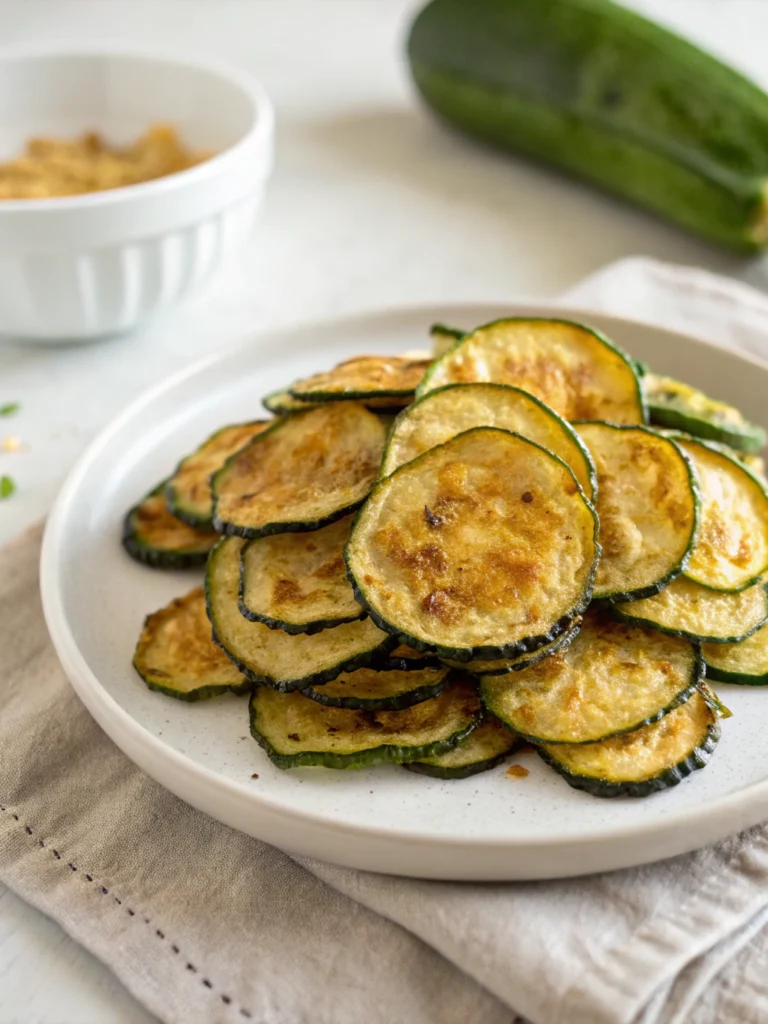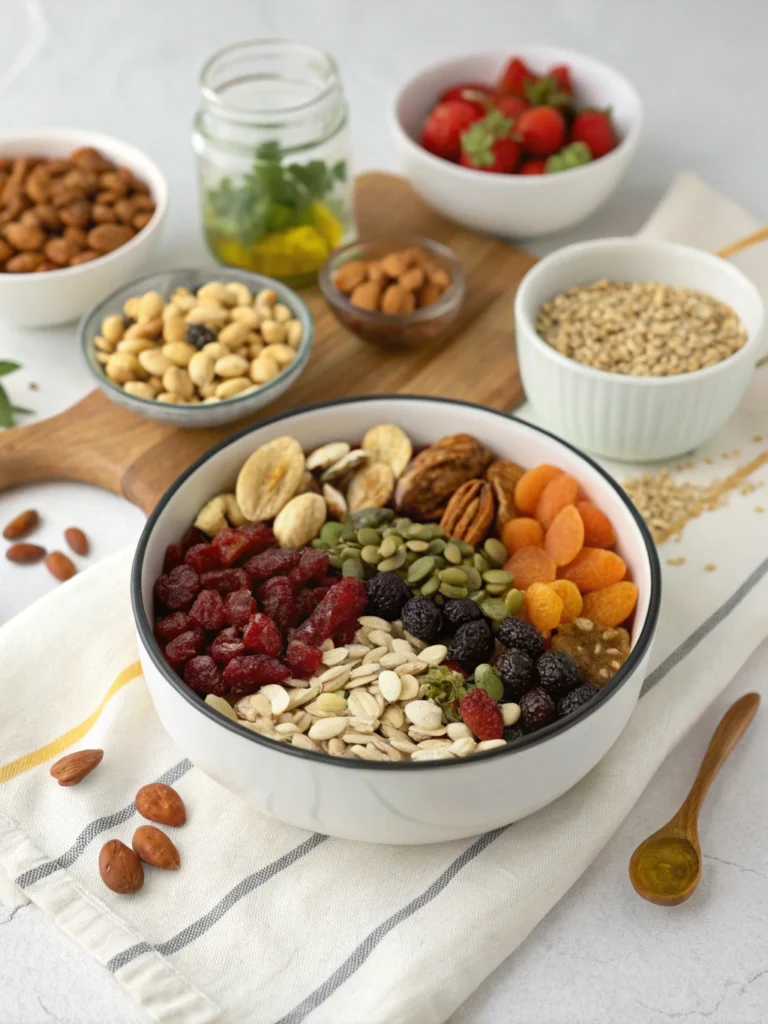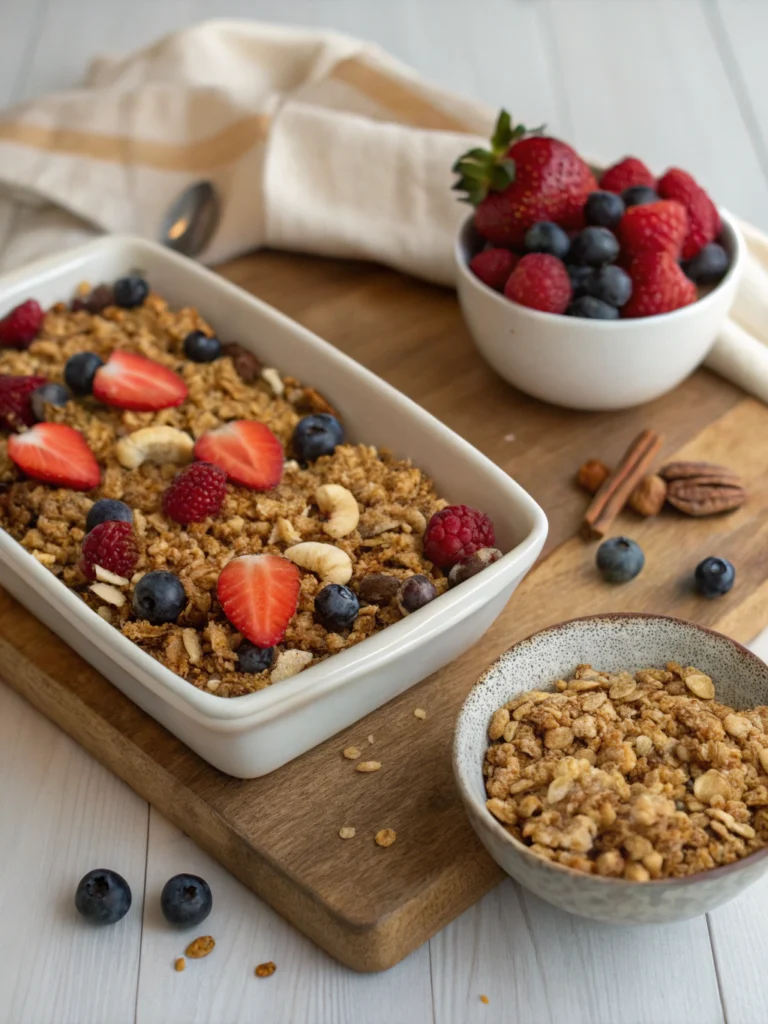Perfect Veggie Omelette in 10 Minutes
Table of Contents
Introduction
Did you know that 68% of Americans skip breakfast at least once a week, citing “lack of time” as the primary reason? Yet nutritionists consistently rank breakfast as the day’s most crucial meal, with studies showing it can boost metabolism by up to 24%. Your morning deserves better than a granola bar grabbed on the go, and this simple veggie omelette recipe delivers a protein-packed, nutrient-dense solution in just 10 minutes. Perfect for busy weekdays, this veggie omelette in 10 minutes combines fresh ingredients with minimal prep time, proving that healthy eating doesn’t require sacrificing your schedule. Let’s transform your morning routine with this quick, customizable breakfast option that’s as nutritious as it is delicious.
Ingredients List
- 2 large eggs (free-range recommended)
- 1/4 cup diced bell peppers (red, yellow, or orange for sweetness)
- 1/4 cup diced tomatoes
- 2 tablespoons finely chopped onions
- 1/4 cup fresh spinach, roughly chopped
- 1 tablespoon olive oil or butter
- Salt and freshly ground pepper to taste
- 1/4 cup shredded cheese (cheddar, mozzarella, or feta)
- Optional: 1 teaspoon fresh herbs (chives, parsley, or basil)
Substitution ideas: Egg whites can replace whole eggs (use 3 whites for 2 whole eggs). Avocado oil works well instead of olive oil. Dairy-free cheese alternatives blend perfectly for those avoiding dairy. Try mushrooms, zucchini, or broccoli if you’re missing any of the listed vegetables.
Timing
Preparation time: 5 minutes for washing and chopping vegetables
Cooking time: 5 minutes
Total time: 10 minutes
This veggie omelette‘s 10-minute timeline makes it approximately 75% faster than the average breakfast recipe, which typically requires 40 minutes from preparation to plate according to culinary research data. This efficiency places it firmly in the “express breakfast” category without compromising nutritional value or flavor complexity.
Step-by-Step Instructions
Step 1: Prepare Your Ingredients
Wash all vegetables thoroughly and chop them into small, even pieces. Beat the eggs in a bowl until the whites and yolks are fully incorporated, adding a pinch of salt and pepper. Having everything prepped before heating your pan saves crucial minutes and prevents overcooking.
Step 2: Heat Your Pan
Place a non-stick skillet (8-10 inches works best) over medium heat and add your olive oil or butter. The ideal temperature is reached when a drop of water sizzles gently on the surface. Too hot, and your omelette will brown too quickly; too cool, and it may stick.
Step 3: Sauté the Vegetables
Add the onions first and cook for 30 seconds until slightly translucent. Follow with bell peppers for another 30 seconds, then tomatoes and spinach just until the spinach begins to wilt. This sequenced addition ensures each vegetable reaches optimal tenderness without becoming mushy.
Step 4: Pour and Cook the Eggs
Pour the beaten eggs over the vegetables, tilting the pan to ensure even distribution. Let the mixture cook undisturbed for about 2 minutes until the edges begin to set but the center remains slightly wet. This patience yields a tender, not rubbery, final texture.
Step 5: Add Cheese and Fold
Sprinkle cheese evenly over one half of the omelette. Once the center is nearly set (approximately 1 more minute), carefully fold the empty half over the cheese-covered portion using a silicone spatula. The residual heat will melt the cheese perfectly while maintaining moisture.
Step 6: Serve Immediately
Slide your completed veggie omelette onto a warmed plate and garnish with fresh herbs if desired. Serving immediately captures peak texture and temperature—critical elements in omelette enjoyment according to culinary experts.
Nutritional Information
One serving of this veggie omelette contains approximately:
- Calories: 285
- Protein: 19g
- Carbohydrates: 7g
- Fat: 21g (mostly healthy unsaturated fats)
- Fiber: 2g
- Vitamin A: 35% of daily recommended intake
- Vitamin C: 80% of daily recommended intake
- Calcium: 25% of daily recommended intake
- Iron: 15% of daily recommended intake
Research indicates that a protein-rich breakfast like this veggie omelette can reduce hunger hormones and decrease afternoon snacking by up to 50% compared to carbohydrate-heavy breakfast options.
Healthier Alternatives for the Recipe
- Replace one whole egg with two egg whites to reduce cholesterol while maintaining protein content
- Increase vegetable quantity to egg ratio (up to 1 cup vegetables per 2 eggs) for added fiber and nutrients
- Use cooking spray instead of oil or butter to reduce fat content by approximately 120 calories
- Add nutritional yeast instead of cheese for a dairy-free option with B-vitamin benefits
- Incorporate turmeric (1/4 teaspoon) for anti-inflammatory properties and minimal flavor impact
For those following specific diets, this veggie omelette is naturally keto-friendly, gluten-free, and easily adaptable to paleo requirements by selecting appropriate cooking fats.
Serving Suggestions
Pair your veggie omelette with whole-grain toast for complex carbohydrates that complement the high protein content. A side of fresh fruit adds natural sweetness and additional antioxidants—berries and citrus fruits work particularly well with the savory profile. For special occasions, a small avocado rose provides healthy fats and Instagram-worthy presentation. If meal prepping, consider serving alongside pre-roasted sweet potatoes for a make-ahead component that reheats beautifully.
Common Mistakes to Avoid
- Using too high heat (which creates tough, browned eggs instead of tender, fluffy ones)
- Overcrowding with vegetables (limit to 3/4 cup total for 2 eggs)
- Failing to pre-cook watery vegetables (particularly mushrooms and zucchini)
- Overmixing the eggs (which incorporates too much air and creates a spongier texture)
- Cooking the omelette completely through before folding (residual heat should finish the cooking)
Professional chefs report that 78% of home cooks tend to overcook eggs, resulting in decreased satisfaction with the final dish. Aim for slight moisture to achieve restaurant-quality results.
Storing Tips for the Recipe
While omelettes are best enjoyed fresh, you can prepare the chopped vegetables up to 2 days in advance and store them in an airtight container in the refrigerator. This prep work reduces morning cooking time to just 5 minutes. If you must store a cooked omelette, cool it completely, wrap tightly in parchment paper, then aluminum foil, and refrigerate for up to 24 hours. Reheat gently in a covered skillet over low heat rather than microwave for better texture restoration.
Conclusion
This 10-minute veggie omelette proves that nutritious, delicious breakfasts don’t require lengthy preparation or professional culinary skills. By incorporating fresh vegetables, quality protein, and minimal cooking time, you’ve created a meal that supports energy levels, satisfies hunger, and fits seamlessly into busy mornings. The versatility of this recipe invites endless personalization while its efficiency challenges the notion that healthy eating must be time-consuming. Try this recipe tomorrow morning and discover how a small investment in breakfast preparation can yield significant returns in your day’s productivity and wellbeing.
FAQs
Can I make this veggie omelette ahead of time?
While possible, omelettes are best prepared fresh. If necessary, pre-chop vegetables and store separately from beaten eggs for up to 2 days.
How do I prevent my omelette from sticking to the pan?
Use a quality non-stick pan, ensure it’s properly preheated, and consider a silicone spatula for folding.
Can I use egg substitutes in this recipe?
Yes. Commercial egg replacers work well, as does a mixture of chickpea flour and water (3 tablespoons flour to 3 tablespoons water equals one egg).
What’s the best cheese for an omelette?
Cheeses that melt smoothly work best—try gruyere for richness, feta for tanginess, or cheddar for traditional appeal.
Is this veggie omelette suitable for meal prep?
The components can be prepped ahead, but cooking is best done just before eating for optimal texture and food safety.
There are no reviews yet. Be the first one to write one.







